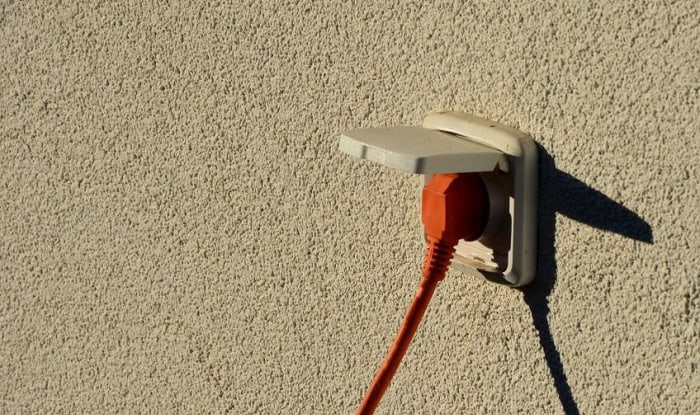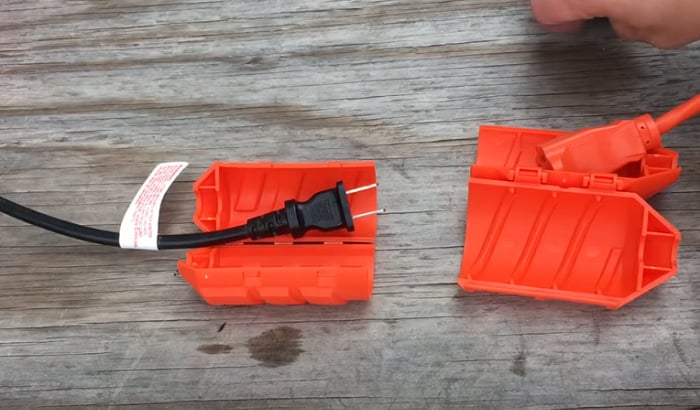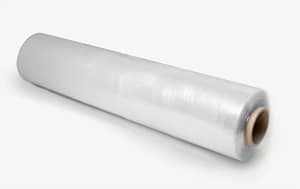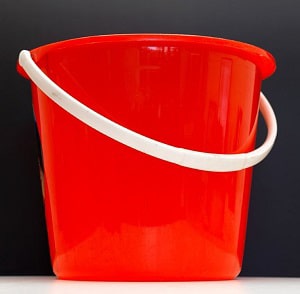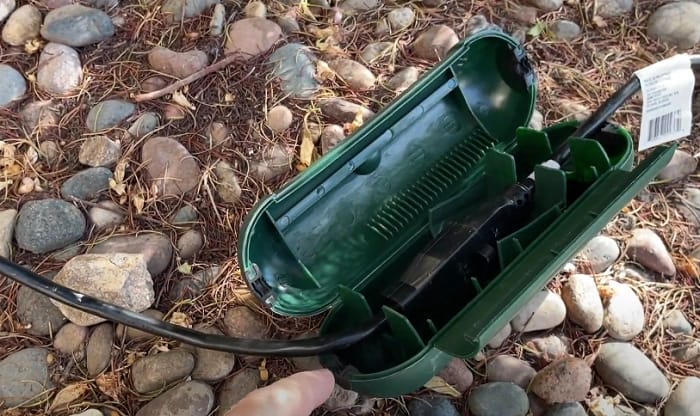Almost all of us use extension cables in our homes to power up electrical devices, especially during the holiday season. In these cases, aside from using an outdoor-rated electrical cord, it is also recommended to secure it from the weather.
This way, we can avoid problems resulting in electrocution or damage to the devices attached to the cable.
If you are looking for several methods on how to protect outdoor extension cord from rain without spending much money, you will enjoy reading this entire article.
Table of Contents
Waterproofing Extension Cord Connection
There are numerous methods to keep outdoor extension cords dry and free of electrical risks. However, for this topic, we will only discuss the simplest and cheapest techniques.
Let’s start.
1. Cling Wrap Method
If you are looking for a homemade extension cord protector, you can easily make one with cling wrap. Though it is typically used for keeping your food fresh in storage, it is also suitable for creating a secure electrical connection.
Furthermore, cling wrap is a kitchen staple and available in almost all houses, making it accessible for everyone.
- To begin, simply plug your extension cord connection and wrap it tightly with cling wrap.
- It’s also a good idea to cover some of the cable length around the plug to prevent water intrusion.
However, if you do not have cling wrap in your house, don’t worry; you can try the next method of DIY waterproof outdoor extension cord cover.
2. Plastic Bottle Method
Another method you can use to cover outdoor extension cords is using a plastic bottle. You will need a pair of scissors or a cutter as well.
Here are the detailed steps you should follow.
Step 1. Cut and Make a Hole into the Bottle
- First, you need to cut a length about a quarter of the bottle’s diameter, right in its middle.
- After that, you can use your scissors to make a small circle on each end of the slits. These holes are for pulling the cord through. You can also make the holes bigger to make them fit a larger cable.
Step 2. Put Inside the Electrical Connection
Next, you can insert the connected plug and extension cord into the bottle.
Put the plug through the big slit in the middle and the two ends of the cable through the round holes.
- Pro tips: You might not need the bottle’s cap to ensure proper ventilation for the electrical connection.
3. Bucket Method
If you think it is going to rain and don’t have enough time to prepare the tool for the DIY cover, you can use the bucket method.
This method only requires two buckets to protect extension cord from rain.
- All you need to do is to put the first bucket in an upside-down position. Then, place the electrical connection right on top of it and put the second bucket on top.
- However, if the weather is windy, the buckets might fall over. In this case, it is good to use pieces of bricks to serve as a barrier, so the containers will not easily fall to the ground.
4. Using Weatherproof Cord Cover
Using a weatherproof cord cover is the best way to protect extension cord outside. This way, you can have a safe, clean, and secure electrical connection. However, this method may require you to spend some money to purchase a cover.
There are various weatherproof cord covers you can find in the market nowadays. You can choose one based on your budget, but consider the quality and protection it offers.
The installation of a weatherproof extension cord cover is also very straightforward.
All you need to do is plug your device into the extension cord and cover the connection up with your chosen cord cover.
Additional Tips When Using Outdoor Extension Cords
Aside from using weatherproof cord covers, consider the following methods to ensure a safe electrical connection with your outdoor extension cords.
1. Hide Your Outdoor Extension Cord
It is recommended to hide an outside extension cord to avoid accidents or injuries caused by tangled wires. Furthermore, concealing the cords can keep them safe and free of animal bites.
2. Keep the Cord in a Cool and Dry Place
While in use, extension cords generate heat, especially when paired with high-powered equipment.
Do not expose them to direct sunlight as it can add to the heat the extension cord produces, making it more prone to damage and circuit overloads.
3. Do not Overload Extension Cord
Consider only plugging in one or two devices with a rating that the cord can support. Never plug in too many devices at once, as this may cause the cord to overheat and deteriorate.
4. Use Extensions Temporarily Only
An extension cord’s primary function is to power up certain electronics temporarily. It is not recommended to use it for permanent electrical applications. If you need cables for continuous usage, installing a dedicated circuit is the best thing to do.
5. Use Only the Appropriate Ratings of Extension Cords
If you need to use an extension cord outside, only pick one that is rated for outdoor use. Furthermore, it is preferable if you have the appropriate AWG as well as the recommended length for your application.
Also, ensure that the circuit or outlet where you connect your extension cord is a GFCI for additional safety.
6. Store the Extension Cord Properly
Finally, before storing your extension cord, inspect it to check if it has any damage or not. If it is not damaged, you can now coil and hang it alongside your other tools on the wall.
However, you should consider purchasing a new cable if you see any damage such as burn marks or exposed wires.
Conclusion
Knowing how to protect outdoor extension cord from rain and using it properly will keep your home and appliances safe.
The above guides will teach you the simplest and cheapest way to cover your electrical connection outside. You can choose from them based on your budget and needs.
Now that you know the different inexpensive ways to protect your electrical connection from the rain, what do you think is the best choice for you? Would you mind sharing it in the comment box below? We would be happy to hear from you.
Furthermore, if you are finding similar topics, don’t forget to learn the following guide:
- Steps to Run Extension Cord From Inside to Outside
- Ways to Know if an Extension Cord is for Outdoor Use

I am Edwin Jones, in charge of designing content for Galvinpower. I aspire to use my experiences in marketing to create reliable and necessary information to help our readers. It has been fun to work with Andrew and apply his incredible knowledge to our content.

